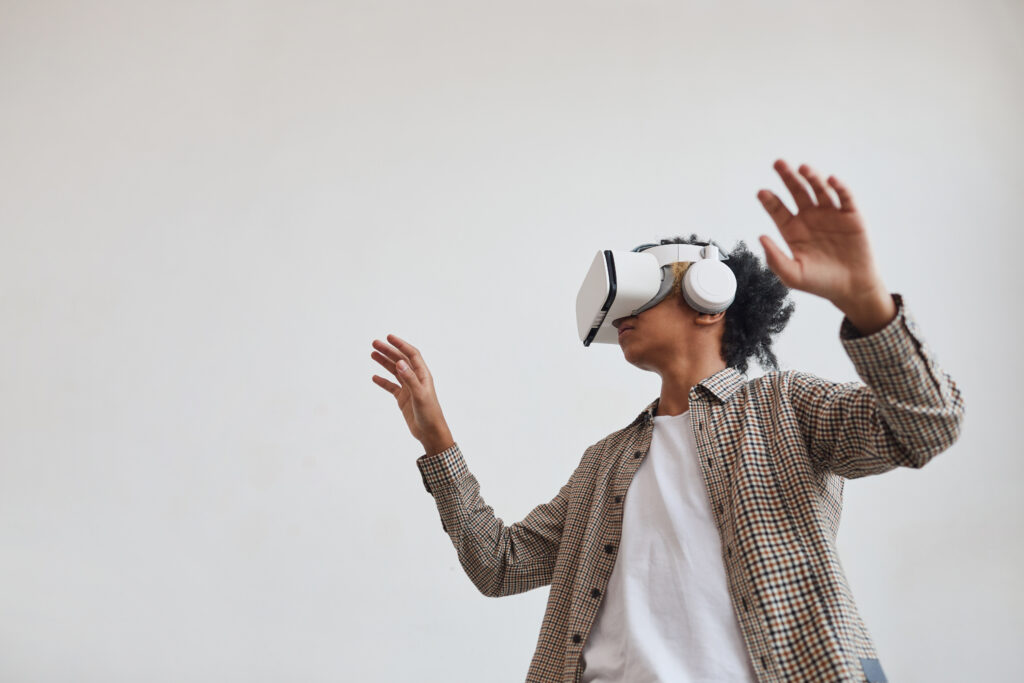
While virtual reality may provide adolescents with a new platform to express themselves and foster new friendships, it can also be a place where they feel insecure, seek validation, and expose their weaknesses and personal information, leading to privacy concerns.
The Virtual Life of My Teen
Virtual reality has revolutionised our society and our lives by allowing people to have fascinating, immersive experiences in artificial environments generated by computers using advanced technology.
Virtual reality offers many advances across various industries by using hardware like glasses or headsets with sensors and lenses and software programs like games, apps, and simulators.
Among adolescents, the most common use of virtual reality is mainly in the virtual game world, where they can have readily accessible transforming experiences and adventures without leaving their desks. As parents, we cannot avoid questioning if they are living in a fantasy world or in reality and what impact this has on our teenagers’ minds and social lives.
Virtual Reality (VR) equipment’s high cost often leads to adolescents wanting to compare themselves based on who possesses the latest and most advanced gear, adding extra pressure on parents when faced with the demands of understanding what adolescents want and if they actually need it.
Adolescents can benefit from the use of virtual reality and its applications to enhance secondary school learning in an interactive way
Dr Emma Allende
Adolescents can benefit from the use of virtual reality and its applications to enhance secondary school learning in an interactive way. For instance, virtual reality is used to help explore historical sites or experience virtual animal dissections in biology lessons, as well as practice new procedures for future doctors and surgeons. It can also be useful in helping your teenager virtually experience some professions, supporting them in the difficult task of choosing A-levels, a career, or a university.
Virtual reality can also be used to help teenagers with some psychological issues common in the adolescent phase, providing therapeutic support in a simulated social situation, contributing to the mental health and wellbeing of adolescents.
When to Worry as a Parent of Adolescents
When using virtual reality, one might experience some physical impacts, such as motion sickness, headaches, or vision problems, especially when using headsets for prolonged periods.
Some adolescents may become irritable and develop addictive behaviour that may lead to a decrease in socialisation, impacting their school performance and mental health. Some teenagers may find it difficult to differentiate between what is real and what is virtual, leading to confusion in social situations.
Parents of teenagers may encounter ethical concerns related to the content of the virtual reality their adolescents are exposed to and may question themselves about the level of supervision that is adequate. Some virtual content may be harmful, and parents wonder how closely they should supervise their adolescents. If you find yourself in this situation, do not hesitate to contact your teen’s school for guidance, as well as joining parent support groups and consulting virtual reality experts who can advise on proper use of virtual reality.
Adolescence is a period of change, self-discovery, and development, where self-identity is being formed. Teens can get confused while they explore different virtual realities and scenarios.
Parents can support their adolescents by creating a safe environment where they can share their experiences, feelings, and concerns about the virtual world. Engaging in open and meaningful conversation helps to improve communication and bonding, leading to the much-needed healthy setting of boundaries and monitoring online activities that are essential for safeguarding adolescents’ well-being.
Virtual Reality Applied to Therapy
Virtual reality can offer a safe scenario to practice facing fears in different situations without having to suffer direct exposure to the stressful factor, helping teenagers try new ways of coping and developing new skills that they will then apply in daily life. This can be particularly helpful when adolescents have to manage exam stress or social interactions that can be recreated virtually to gain skills before applying them in the real world.
Thanks to the interactive nature of virtual reality, adolescents may feel more motivated to adhere to specific tasks, such as dedicating more time to studying and exploring subjects from different perspectives, helping them learn in a more enjoyable and effective way and promoting better academic outcomes.





